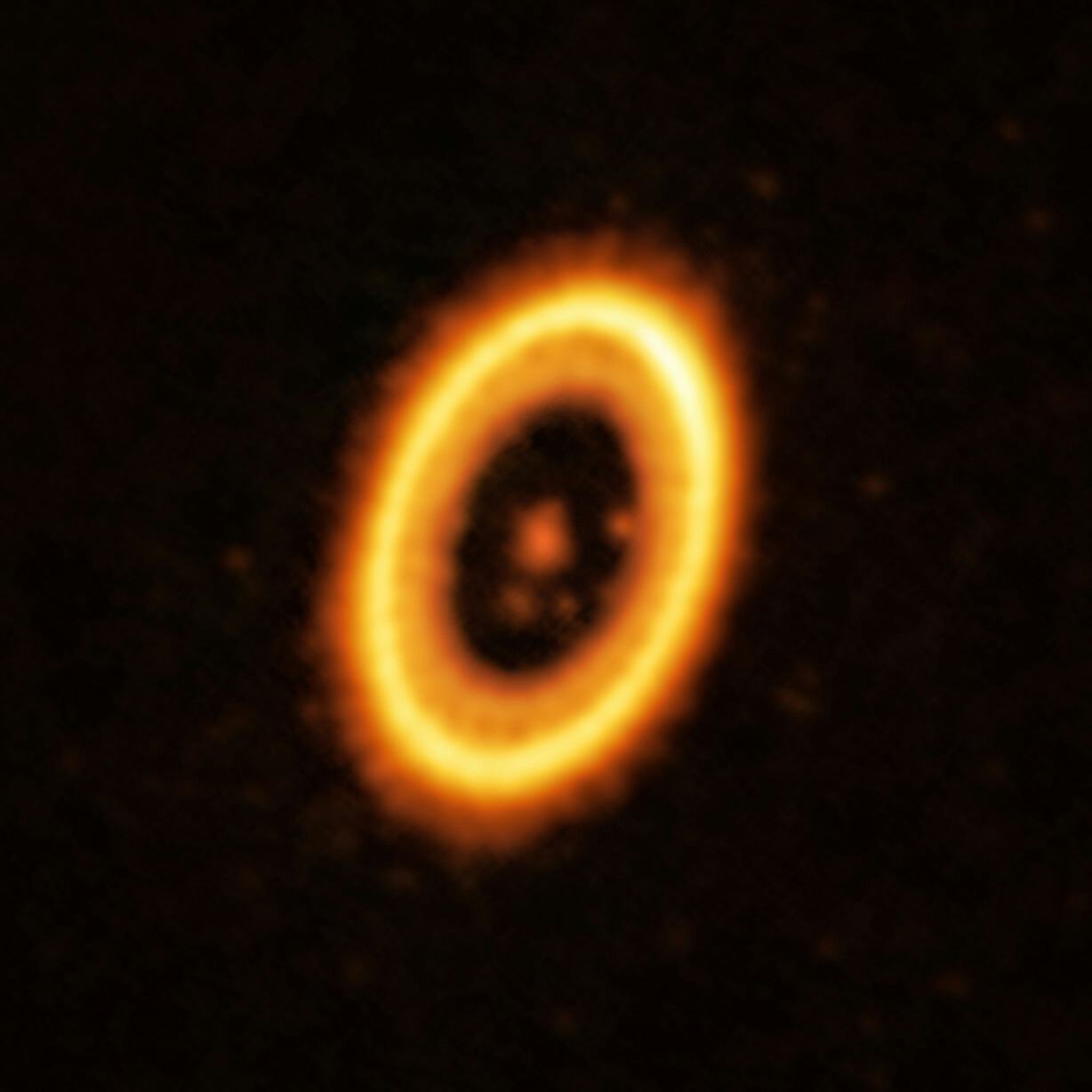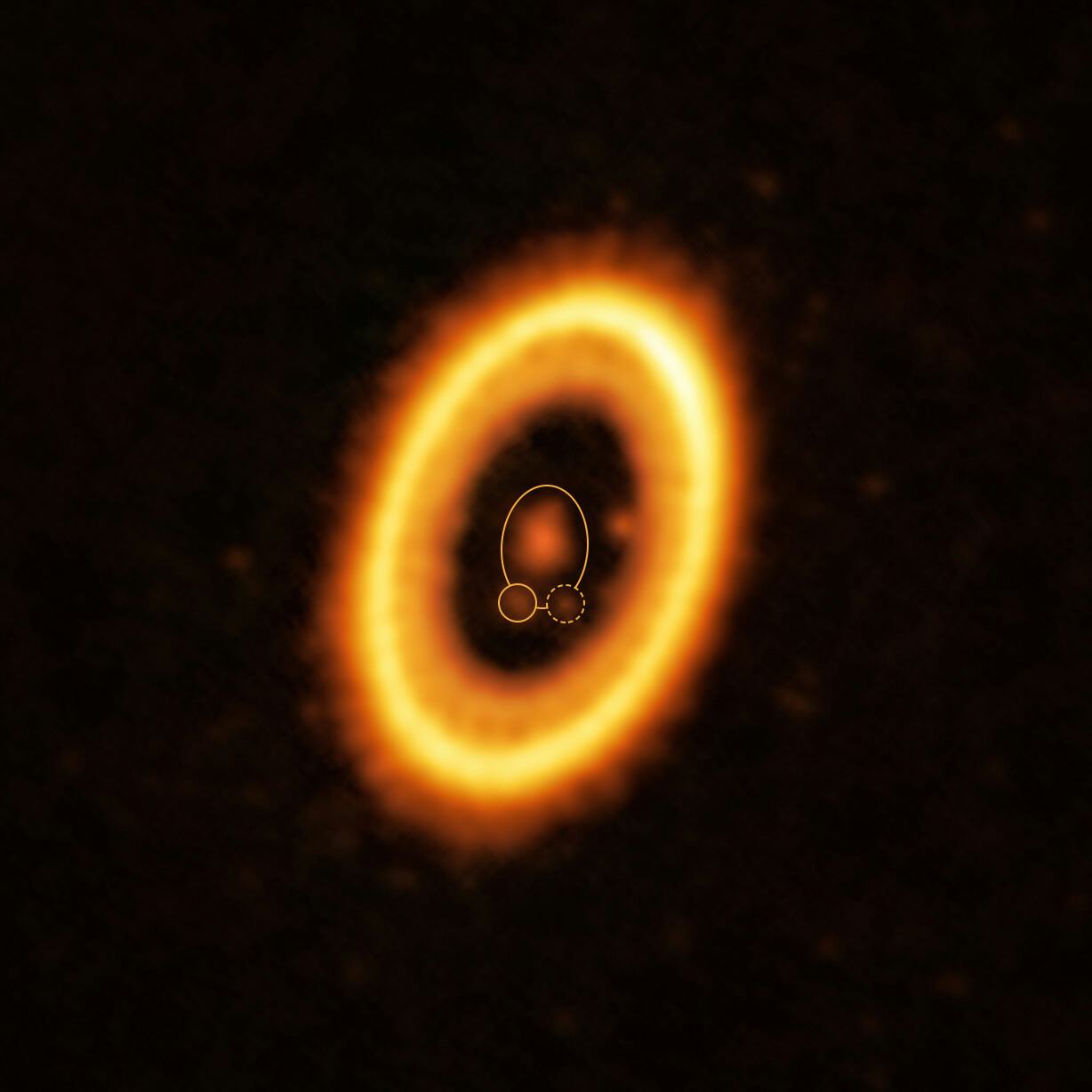
About 370 light years away, in the infant star system PDS-70, astronomers may have just caught an exoplanet pulling itself together on the same orbit as its giant sibling.
We already know that more than one object can share the same orbit; Jupiter has a collection of 120,000 asteroids following its same path around the Sun, for example. Earth has one, too. But although it’s theoretically possible, astronomers have never discovered two whole planets sharing the same orbit around a star before.
“Who could imagine worlds that share the duration of the year and the habitability conditions? Our work is the first evidence that this kind of world could exist,” says Olga Balsalobre-Ruza of the Centre for Astrobiology in a recent statement. She and her colleagues published their findings in the journal Astronomy and Astrophysics.
This Gas Giant Will Have A Little Buddy — And Some Moons

PDS-70 is a very young star system, only about 5.4 million years old, so young that planets are still coalescing from the disk of gas and dust surrounding the small star. It’s one of the few exoplanet systems that astronomers have managed to image directly; from Earth, we appear to be looking straight up (or straight down) into the system. At least two planets, both gas giants, have formed so far: PDS-70b and PDS-70c. There may be others soon; astronomers can see gaps in the dust that forms the disks, which may mark the orbits of planets in various stages of forming.
Balsalobre-Ruza and her colleagues recently spotted a cloud of debris about twice the mass of our Moon trailing a bit behind the innermost gas giant, PDS-70b. The debris could be the building blocks of a new little planet, or it could be a cloud surrounding a young planet that’s already formed. PDS-70b itself is so young that it’s still surrounded by its own little disk of gas and rocky debris, which will eventually coalesce into moons (PDS-70c also has a disk of moon material still swirling around it).
The debris cloud is in exactly the right spot for what astronomers call a Trojan object (the name comes from Jupiter’s merry band of asteroids, mentioned above, which were originally named after Trojan heroes from The Iliad; now it’s a catch-all term for any objects that share an orbit in the same way). It’s in what’s called a Lagrangian zone, a region in a planet’s orbit where objects — like asteroids — can be trapped thanks to the balance between the planet’s gravity and the star’s gravity.
“[Exoplanet Trojans] have so far been like unicorns: They are allowed to exist by theory, but no one has ever detected them,” says coauthor Jorge Lillo-Box, also of the Centre for Astrobiology, in a recent statement.
As if the orbital situation in PDS-70 wasn’t complicated enough, PDS-70b and PDS-70c are in a nearly 1:2 orbital resonance, which means that PDS-70b completes roughly one orbit in the time it takes its outermost neighbor, PDS-70c, to complete roughly two orbits. It’s entirely possible that every time these two planets pass each other on a lap around their star, their mutual gravitational attraction will pull them closer to being in a true resonance. And it’s not clear how that might affect PDS-70b’s Trojan follower.
Balsalobre-Ruza and her colleagues discovered the debris cloud in archived data from the Atacama Large Millimeter/submillimeter Array (ALMA), a telescope in the highlands of Chile. They’ll have to wait a few years to confirm that what they’ve found really is orbiting the star on the same path as PDS-70b, though; it takes the gas giant about 120 years to make a complete lap around the star, so it will take a few years before the planet, or the debris cloud, will have moved enough for astronomers to confirm that they’re actually moving together.







